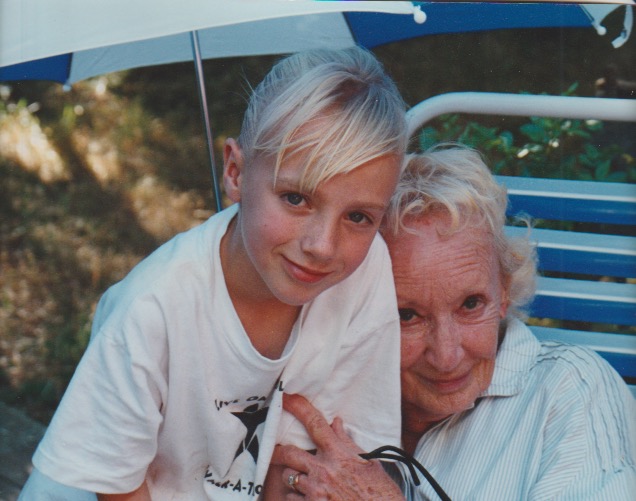Yesterday I pulled all the solar-powered light fixtures from my garden and stored them in the shed. It's not that they didn't work, but that they worked too well: they were competing with an entirely miraculous light show provided by Mother Nature.
 |
| Fireflies in the Smoky Mountains, by Radim Schreiber |
|
Every year around Memorial Day we are blessed with the nocturnal mating dances of thousands of fireflies, drawn to this particular block in Traveler's Joy by the absence of streetlights and backyard floodlights, and by the remnant of hardwood-succession woodland that extends for a scant acre on the eastern border of our property. Worldwide there are 2,000 species of firefly (aka Junebug or lightning bug), with our species in upstate South Carolina, Photuris frontalis, being one of only three synchronous firefly species in North America. Congaree National Park in Hopkins, SC, south of Columbia, hosts firefly-viewing evenings during their peak season from mid-May to June 1, and just announced the program's end; however, on our little mountain poised above the Broad River plain we peak later than the sweltering midlands, and are enjoying our showiest nights right now. It helps that our current period of clear, cooler weather was preceded by days of torrential rain, as Photuris favors marshy conditions, which apparently provide more food for larvae.
 |
| Yellow squiggle right corner? That's a firefly, dancing in the meadow at dusk |
While the Congaree Park site advises visitors that the showiest synchronous lightstorms occur just after dusk, our mob of lightning bugs don't usually get the party started until eleven o'clock. Two nights ago my husband and I stepped outdoors close to midnight to catch a breath of air before retiring for the night and found ourselves transfixed. The eighty-foot pecan tree at the edge of our garden was twinkling with tiny lights throughout its length and breadth, while the adjacent woods sparkled with a continuous explosion of diamond-bright, blinking lights, imparting a greenish glow to the intervening meadow. Even our near-sighted cat was frozen in place, watching the lights.
Displays of glory put on by the natural world always cast me back in time to childhood, when I experienced with electrifying awe such wonders as the first snowfall, floodwaters sweeping past our house, or a lightning storm witnessed from the relative safety of an overturned wading pool I shared with an older sister. These were made more wondrous by the fact that I lacked the simplest scientific knowledge about how such phenomena occurred. I was free to invent my own stories of causation, and to marvel.
 |
| Our mating venue for Photuris frontalis: they hover in the shrub beds and sizzle in the pecan |
|
|
There were no fireflies where I grew up, so seeing them on southern summer nights, even two decades-plus into this seasonal ritual, continues to feel extraordinary. That's true despite my knowing what causes the firefly's blinking (a chemical function of an organ in the abdomen called bioluminescence) and knowing why they gather in large groups to do their dances (the males' blinking lights signal to females that they are looking for love. The female firefly waits until she sees a blinking pattern she likes, and then signals to that particular male, telling him she's on board. Think of a freshman mixer at a hard-partying college campus.)
 |
| from The Firefly Experience, Radim Schrieber |
Because fireflies require darkness to transmit and interpret their mating signals correctly, they are on the decline everywhere in the world. Even in a sparsely populated southern town such as our own, light pollution is rampant. We are lucky enough to have our house blocking one streetlight at the nearby intersection and to have the second light at the upper block only functioning partially, with no floodlights at neighboring houses. I'm thankful that on clear nights throughout the year we are able to indulge ourselves in star-gazing, and on a few dark evenings in May and June we are the chosen venue for Phonturis frontalis prom dances, no disco ball required.
# # #
For information about firefly-viewing at Congaree National Park in Hopkins SC:
https://www.nps.gov/cong/fireflies.htm
To view spectacular photographs of fireflies, visit the Firefly Experience website of Radim Schreiber, a Czech-born photographer now based in Iowa:
http://www.fireflyexperience.org/photos/index.php







Comments
Post a Comment
Thanks for dropping by!